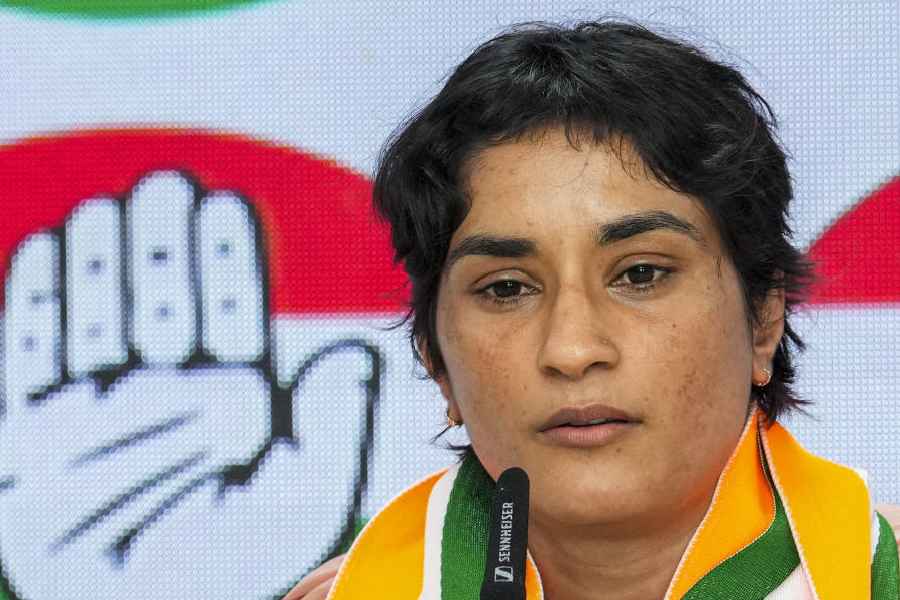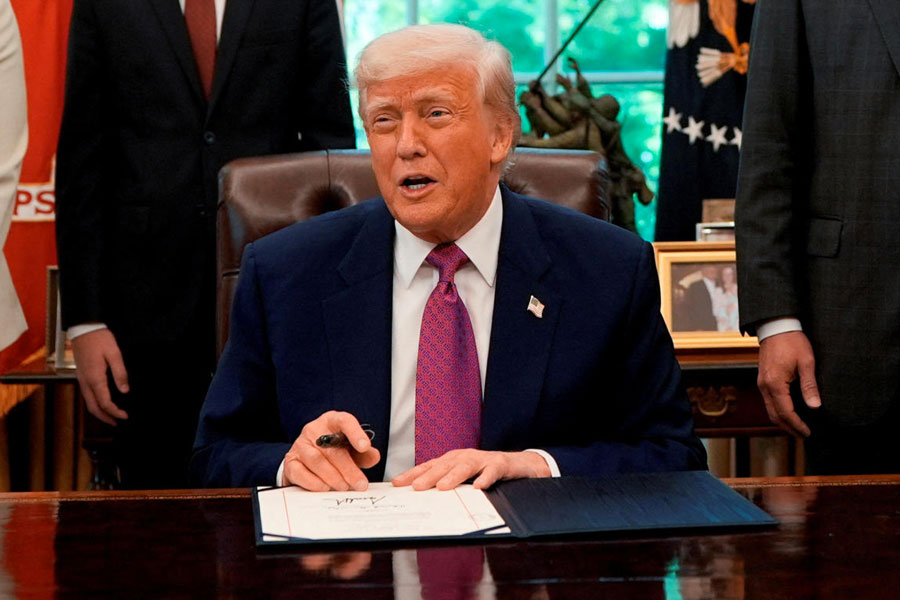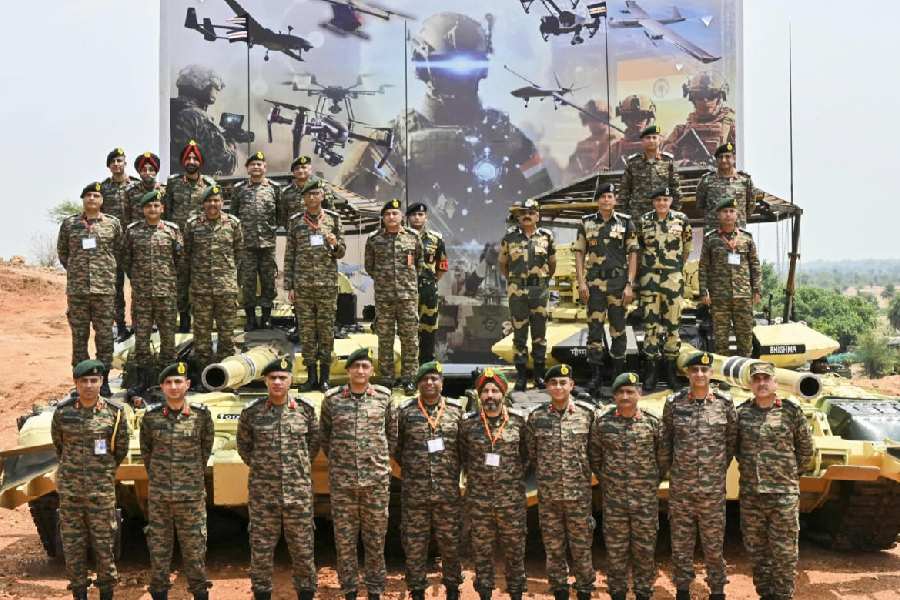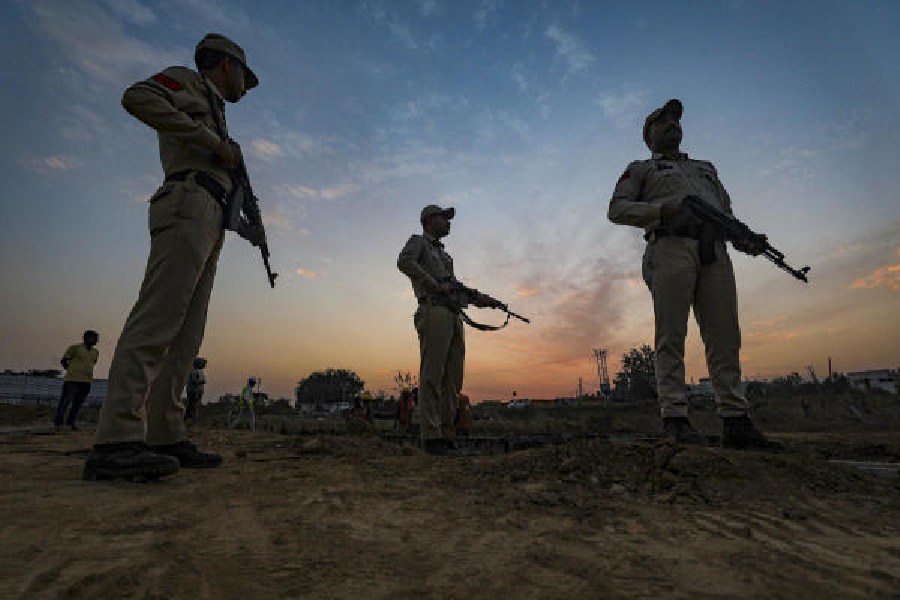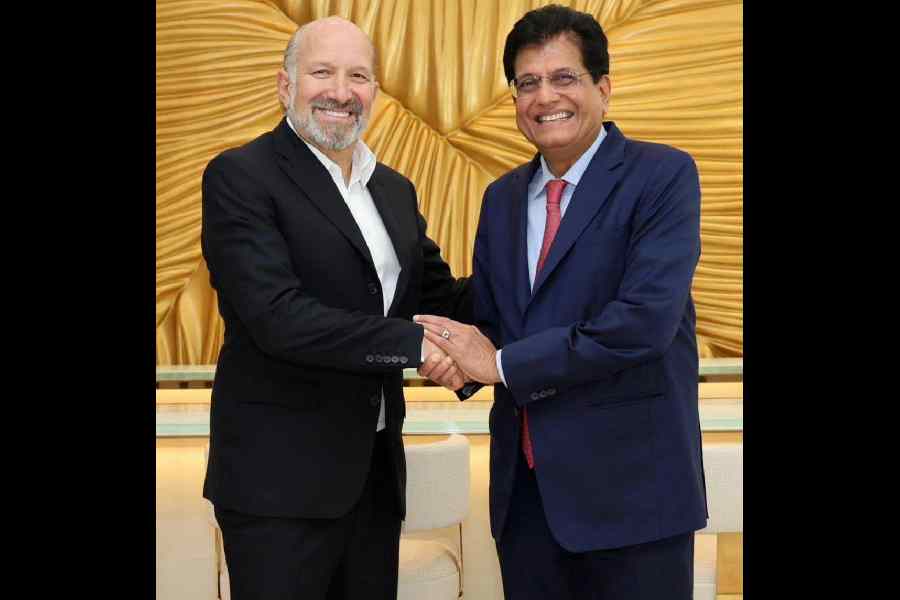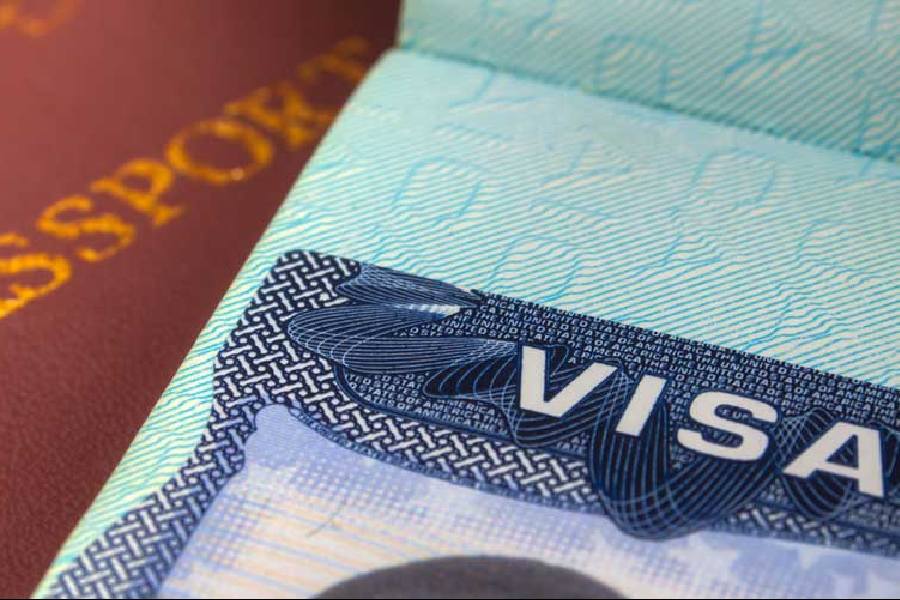New Delhi, April 2: The Rashtriya Swayamsevak Sangh's second-in-command today urged equal respect for the Tricolour and the saffron flag that his organisation promotes, and put Vande Mataram on a par with Jana Gana Mana.
" Haamare liye Tiranga aur bhagwa dhwaj saman roop se vandaniya hai (For us, the Tricolour and the saffron flag are equally venerable)," Sangh general secretary Suresh "Bhaiyya" Joshi was quoted by the Sangh's official media website as saying.
Joshi was speaking on "Rajyadharma and Rashtradharma" (the nature of the State and the nature of the nation) at Deendayal Research Institute, Mumbai, where he distinguished between the geographical concept of the country, the political concept of the State and the cultural concept of the nation.
"It's every citizen's duty to respect the Tricolour, which the Constitution accepted as the national flag in 1947. The bhagwa dhwaj too deserves respect as a symbol of our national identity from ancient times," Joshi said.
"If Jana Gana Mana is a manifestation of the concept of the State, Vande Mataram is that of the nation. So, everyone should respect both."
The first two stanzas of Vande Mataram enjoy the status of India's national song, while Jana Gana Mana is the national anthem.
Many believe that Vande Mataram is impossible to sing for practitioners of several faiths because it implies worship of someone other than God - the mother or motherland.
Late Sangh general secretary H.V. Seshadri had in his book, RSS: A Vision in Action, claimed that 99 per cent among a million respondents had preferred Vande Mataram as the national anthem over Jana Gana Mana in a 1949 opinion poll conducted by Sangh sympathisers.
Jana Gana Mana would have had much less pan-India recognition before Independence - shortly after which the poll was conducted - while Vande Mataram provided perhaps the most widely popular and inspirational slogan of the freedom movement.
The Sangh has always had a problematic relationship with the Tricolour, contending that the colour green was included to please Muslims.
As late as September 19 last year, Sangh spokesperson Manmohan Vaidya had claimed that several members of the flag panel the Congress had set up in 1931 felt the adoption of multiple colours reflected "communal thought".
After the first Republic Day in 1950, the Sangh never hoisted the Tricolour at its Nagpur headquarters, sticking to its bhagwa dhwaj, with its inscribed "Om", even on Republic Day and Independence Day. It changed the practice in 2002 when Atal Bihari Vajpayee was Prime Minister.
Joshi described the country as a "geographical unit" whose borders can be redrawn at times. The State is a political unit, evolved to deliver security and necessary amenities, whose nature can change with the times.
But the nation manifests itself over thousands of years as a cultural way of life and can never change.
Joshi said: "Citizenship is acquired through a legal process but only someone who maintains and feels a mother-son relationship with the nation is a nationalist."
From the "mother-son" construct, the slogan "Bharat Mata ki jai" was just a step away.
"Those who regard this earth as their mother can chant 'Bharat Mata ki jai'; only those who consider this earth a piece of land to enjoy refuse to say 'Bharat Mata ki jai'," Joshi concluded.


